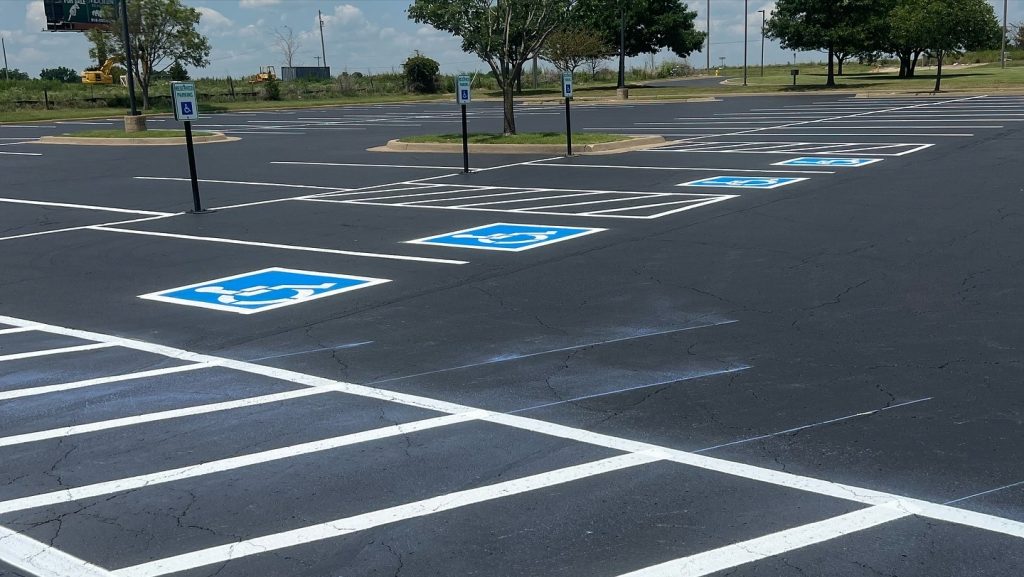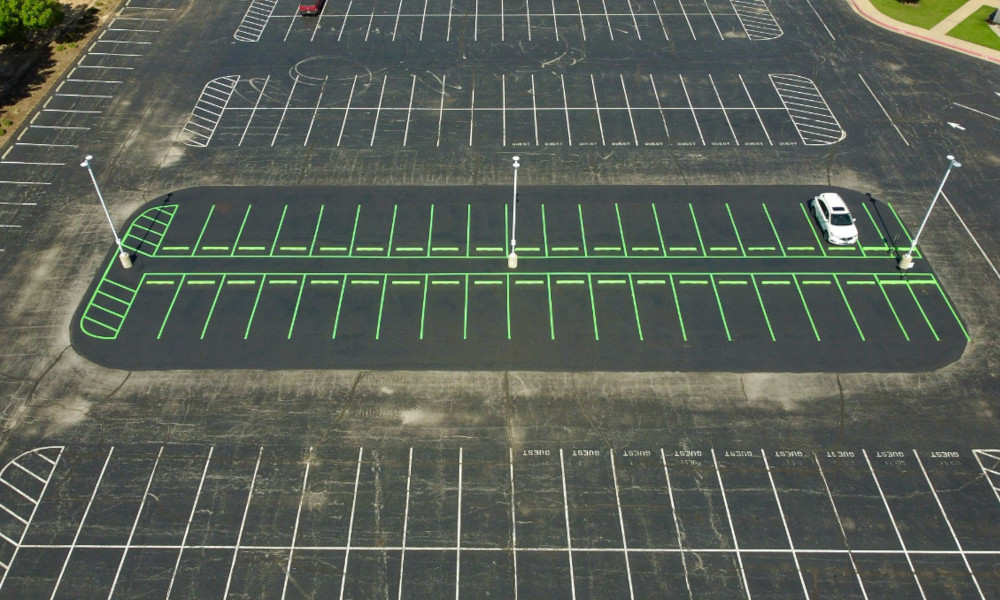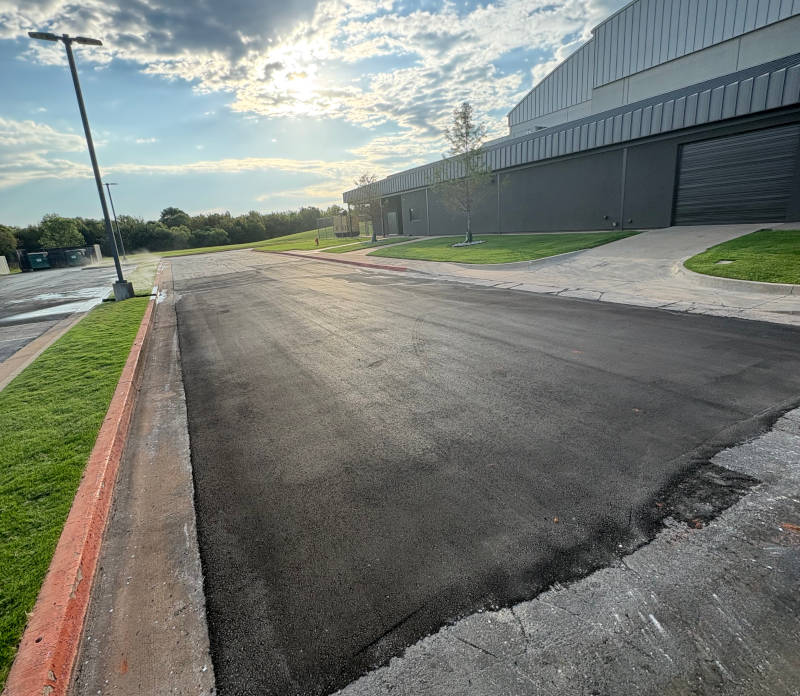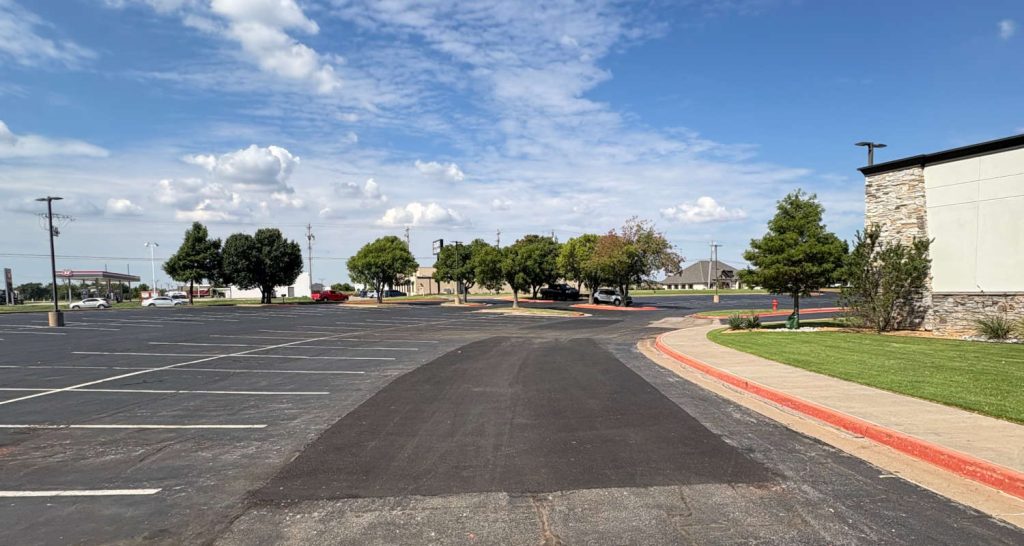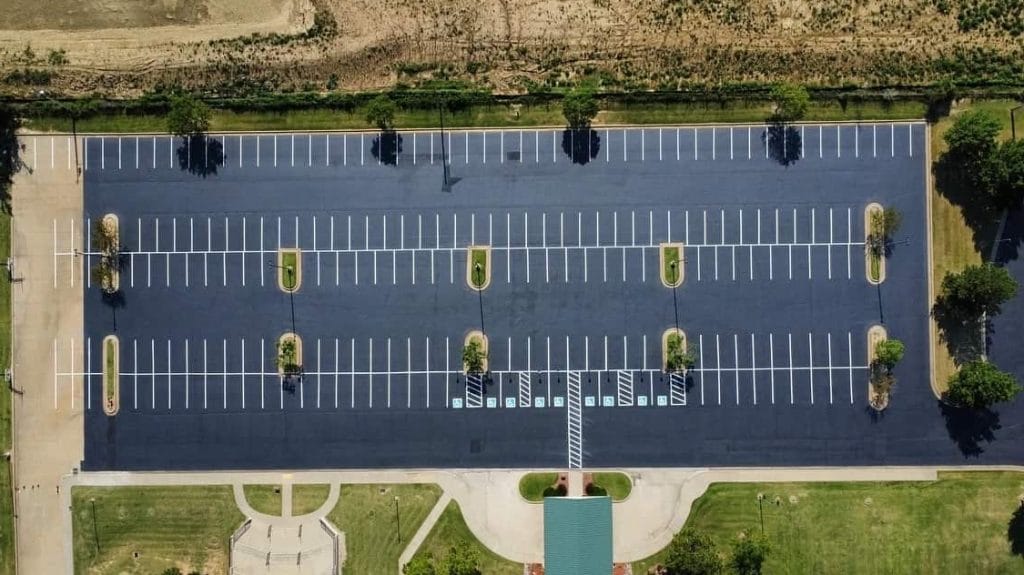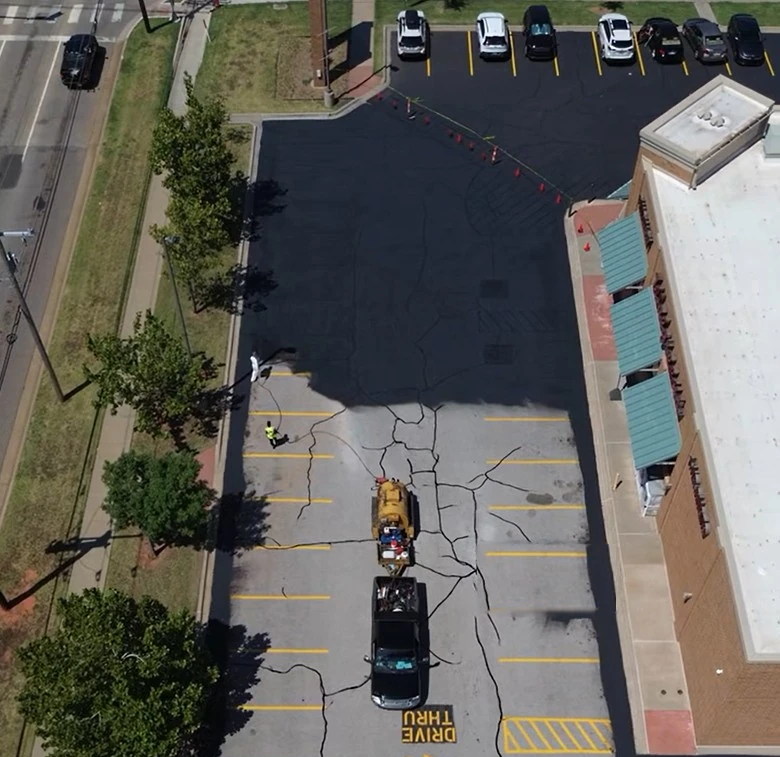Ensuring that your parking lot is ADA-compliant is not only a legal requirement but also an essential step toward creating an accessible and welcoming environment for all. Businesses in Oklahoma must adhere to the Americans with Disabilities Act (ADA) regulations, which outline specific guidelines for parking lot accessibility. We’ll break down the key components of ADA compliance and how to ensure your parking lot meets these standards.
What is ADA Compliance for Parking Lots?
The Americans with Disabilities Act (ADA) is a federal law enacted in 1990 to prohibit discrimination against individuals with disabilities. Part of the ADA includes standards for accessible design, which apply to parking lots and other facilities. These standards ensure that parking lots provide adequate access for people with disabilities.
Key Requirements for ADA-Compliant Parking Lots
How Many Accessible Stalls Are Needed?
The number of accessible parking spaces required depends on the total number of parking spaces in the lot. Here is the minimum requirement based on ADA guidelines:
- General Requirements:
- 1-25 spaces: 1 accessible stall
- 26-50 spaces: 2 accessible stalls
- 51-75 spaces: 3 accessible stalls
- 76-100 spaces: 4 accessible stalls
- 101-150 spaces: 5 accessible stalls
- 151-200 spaces: 6 accessible stalls
- 201-300 spaces: 7 accessible stalls
- 301-400 spaces: 8 accessible stalls
- 401-500 spaces: 9 accessible stalls
- 501-1,000 spaces: 2% of total spaces must be accessible
- Over 1,000 spaces: 20 accessible stalls plus 1 for every 100 spaces over 1,000
At least one of these stalls must be van-accessible for every six accessible spaces.
- Special Requirements for Medical Facilities: Certain medical facilities have unique requirements for accessible parking. For hospital outpatient facilities, at least 10% of patient and visitor parking spaces must be accessible. Rehabilitation centers and outpatient therapy facilities that primarily serve individuals with mobility challenges must dedicate at least 20% of their parking spaces to accessibility to ensure adequate accommodations for patients.
At least one of these stalls must be van-accessible for every six accessible spaces.
Accessible Parking Spaces
ADA-compliant parking lots must include a specific number of accessible parking spaces based on the total number of spaces in the lot. These spaces must meet the following criteria:
- Size: Accessible parking spaces must be at least 8 feet wide, with an adjacent access aisle that is at least 5 feet wide.
- Van-Accessible Spaces: At least one in every six accessible spaces must be van-accessible, with an access aisle at least 8 feet wide.
- Location: Accessible spaces must be located near the building’s entrance and connected to it via an accessible route.
- Signage: Each accessible space must have a sign featuring the International Symbol of Accessibility (ISA).
Slope and Surface Requirements
- Slope: Accessible parking spaces and access aisles must have a slope no steeper than 1:48 (2.08%).
- Surface: The surface must be stable, firm, and slip-resistant to ensure safety for all users.
Pathways and Ramps
- Accessible Routes: Parking lots must have accessible routes connecting the parking spaces to the building entrance. These routes should be free of obstructions and at least 36 inches wide.
- Ramps: If the accessible route requires a change in elevation, ramps must be provided. Ramps should have a slope no steeper than 1:12 and must include handrails if the rise exceeds 6 inches.
Exceptions to ADA Requirements
Certain parking facilities are exempt from including accessible spaces under specific conditions. Lots used exclusively for buses, trucks, delivery vehicles, law enforcement vehicles, or vehicular impoundment do not need to provide accessible parking. However, if these facilities allow public access—such as for impounded vehicle retrieval—an accessible passenger loading zone must be included.
How to Ensure Your Parking Lot is ADA Compliant
- Assess Your Current Parking Lot Conduct a thorough inspection of your parking lot to identify areas that do not meet ADA standards. Measure the size, slope, and location of your existing accessible parking spaces and pathways.
- Plan for Upgrades If your parking lot is not compliant, create a plan to make the necessary upgrades. This may include re-striping spaces, adding signage, or installing ramps.
- Hire Professionals Working with experienced paving contractors ensures that your parking lot meets ADA requirements. Professionals can help with proper grading, striping, and signage installation.
- Stay Informed ADA regulations are subject to updates. Stay informed about any changes to ensure ongoing compliance.
Benefits of ADA-Compliant Parking Lots
- Avoid Legal Penalties: Non-compliance with ADA regulations can result in fines and legal action.
- Enhanced Accessibility: ADA-compliant parking lots create an inclusive environment, improving access for all customers and visitors.
- Improved Reputation: Demonstrating a commitment to accessibility enhances your business’s reputation and customer satisfaction.
Get a Free ADA Compliance Assessment
Ensuring your parking lot is ADA-compliant doesn’t have to be overwhelming. Contact PavementPro today for a free assessment and consultation. Let us help you create a safe, accessible, and compliant parking lot for your business.

